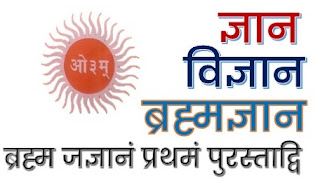Grammar Tutorial - Verb Tenses & Moods / तिङन्तपद / tiN^antapada
Verb Forms (तिङन्तपद / tiN^antapada): In chapter 1 we were introduced with verb (क्रिया / kriyaa) and its use. We learnt that in Sanskrit धातु (dhaatu) is the base or root of all verbs. Each verb is a derivative or धातुरुप (dhaaturupa) of it's root. We also learnt that in a sentence the verb (धातु / dhaatu) always follows the person (पुरुष / puruSha) and number (वचन / vachana) in which the Subject or कर्ता (kartaa) is. Verb normally refers to action, state, existence or occurrence etc.
In this chapter we will study the 5 mostly used verb-forms or लकार (lakaara) out of 10 verb-forms that a verb can have. The 5 verb-forms covered are enough for day-to-day use of Sanskrit.
Verb or धातु (dhaatu) has 10 different तिङन्तपद (tiN^antapada) forms known as लकार (lakaara) and they are listed below.
लट्लकार / laTlakaara
लृट्लकार / lRRiTlakaara
लङ्लकार / laN^lakaara
आझयांलोट्लकार / aajhaayaa.nloTlakaara
विधैलिङ्लकार / vidhailiN^lakaara
लिट्लकार / liTlakaara
लुट्लकार / lRRiTlakaara
आशीलिङ्लकार / aashiiliN^lakaara
लुङ्लकार / luN^lakaara
लृङ्लकार / lRRiN^lakaara
We will study the first 5 verb-forms in detail, in coming chapters. Followings are some common features of different लकार (lakaara) in Sanskrit.
Each लकार (lakaara) has verb-forms for three persons (पुरुष / puruSha) and three numbers (वचन / vachana). So, in total each लकार (lakaara) has 9 different verb-forms or धातुरुप (dhaaturupa) in it.
The persons are third person (प्रथमपुरुष / prathamapuruSha), second person (मध्यमपुरुष / madhyamapuruSha) and first person (उत्तमपुरुष / uttamapuruSha). धातुरुप (dhaaturupa) in first person (उत्तमपुरुष / uttamapuruSha) are always used with अस्मद् (asmad) शब्द i.e., 'Me' as the Subject in the sentence. धातुरुप (dhaaturupa) in second person (मध्यमपुरुष / madhyamapuruSha) is always used with युस्मद् (yusmad) शब्द i.e., 'You' as Subject in the sentence. The third person (प्रथमपुरुष / prathamapuruSha) is used in all other cases.
Similarly each person (पुरुष / puruSha) has three numbers (वचन / vachana), which are singlar (एकवचन / ekavachana), dual (द्वीवचन / dviivachana) and plural (बहुवचन / bahuvachana).
The number (वचन / vachana) of the धातुरुप (dhaaturupa) always follows the number (वचन / vachana) of the Subject or शब्दरुप (shabdarupa) in the sentence. The gender (लिङ्ग / liN^ga) of the Subject does not affect the धातुरुप (dhaaturupa).
In coming chapters we will study the different verb-forms (धातुरुप / dhaaturupa) in detail. For easier and simpler study while describing the different verb-forms we have used पठ् / paTh (read) and गम् / gam (go) धातु / dhaatu for sentence formation. At the end of each chapter Practice Sentences are given using many commonly used nouns and verbs. Studying the Practice Sentences will help building a good vocabulary for day-to-day conversasion in Sanskrit.














.jpeg)
.jpeg)
.jpeg)
.jpeg)
0 Comments